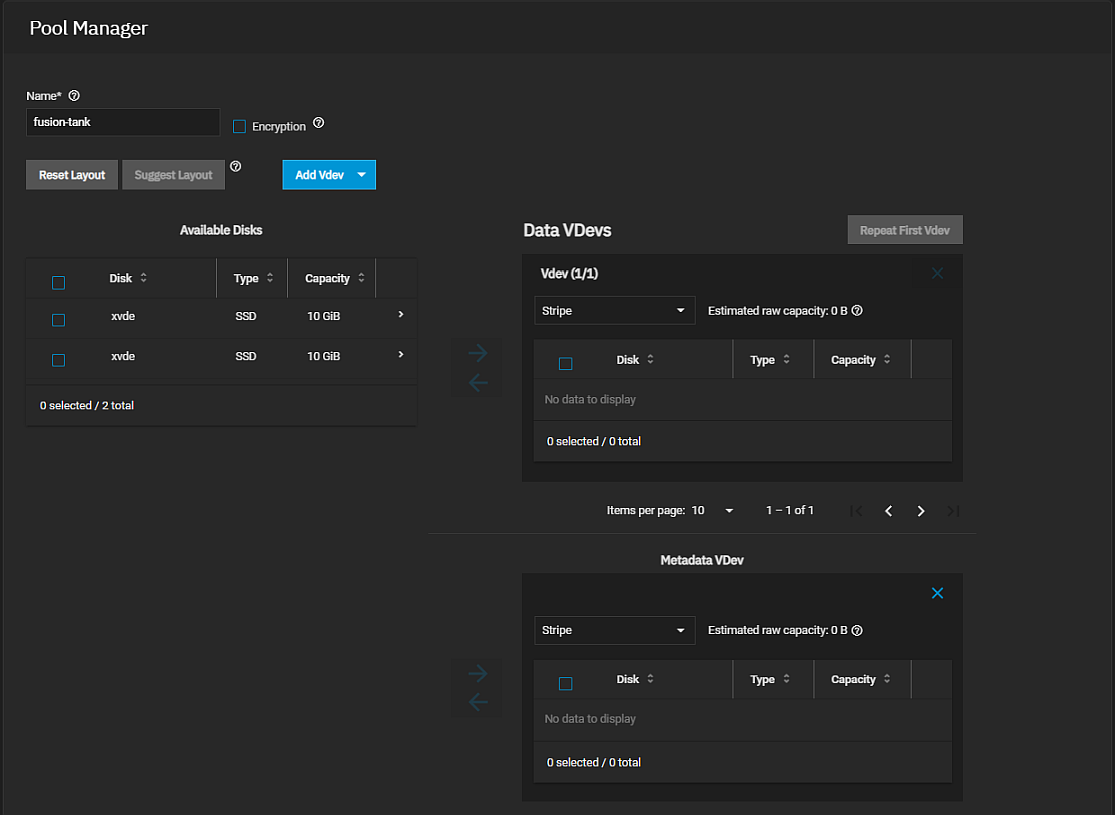Fusion Pools
3 minute read.
Last Modified 2022-12-09 09:08 -0500Fusion Pools are also known as ZFS allocation classes, ZFS special vdevs, and metadata vdevs (Metadata vdev type on the Pool Manager screen.).
Go to Storage Dashboard, click Create Pool.
A pool must always have one normal (non-dedup/special) VDEV before you assign other devices to the special class.
Enter a name for the pool using up to 50 lower case alpha-numeric and permitted special characters that conform to ZFS naming conventions. The pool name contributes to the maximum character length for datasets, so it is limited to 50 characters.
Click ADD VDEV and select Metadata to add the VDEV to the pool layout.
Add disks to the primary Data VDevs, then to the Metadata VDEV.

Add SSDs to the new Metadata VDev and select the same layout as the Data VDevs.
The metadata special VDEV is critical for pool operation and data integrity, so you must protect it with hot spare(s).
Using special VDEVs identical to the data VDEVs (so they can use the same hot spares) is recommended, but for performance reasons, you can make a different type of VDEV (like a mirror of SSDs). In that case, you must provide hot spare(s) for that drive type as well. Otherwise, if the special VDEV fails and there is no redundancy, the pool becomes corrupted and prevents access to stored data.
Drives added to a metadata VDEV cannot be removed from the pool.
When more than one metadata VDEV is created, then allocations are load-balanced between all these devices. If the special class becomes full, then allocations spill back into the normal class.
After you create the fusion pool, the Status shows a Special section with the metadata SSDs.
Related Pools Articles
- Main Dashboard
- Creating Storage Pools
- Disks Screens
- Managing Advanced Settings
- Importing Data
- Pool Manager Screen
- Advanced Settings Screen
- Storage Dashboard Screen
- SLOG Over-Provisioning

